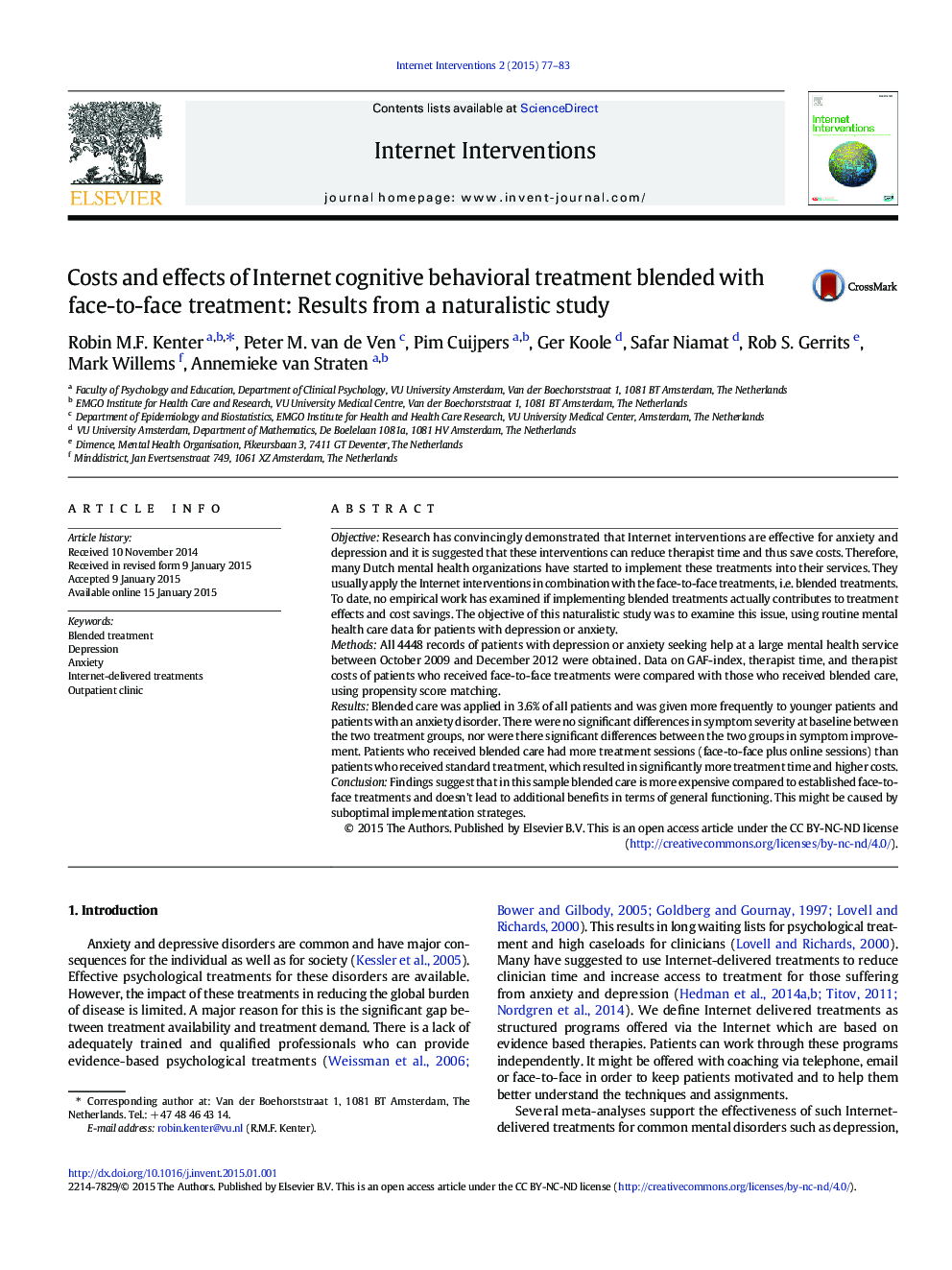| کد مقاله | کد نشریه | سال انتشار | مقاله انگلیسی | نسخه تمام متن |
|---|---|---|---|---|
| 557151 | 874595 | 2015 | 7 صفحه PDF | دانلود رایگان |
• We examine the effects and costs of blended care using routine mental health care data.
• Blended care resulted in significantly more treatment time and higher costs.
• Blended care does not automatically lead to a more efficient ways of treating outpatients.
• Stronger implementation procedures are necessary in order to disseminate blended care.
ObjectiveResearch has convincingly demonstrated that Internet interventions are effective for anxiety and depression and it is suggested that these interventions can reduce therapist time and thus save costs. Therefore, many Dutch mental health organizations have started to implement these treatments into their services. They usually apply the Internet interventions in combination with the face-to-face treatments, i.e. blended treatments. To date, no empirical work has examined if implementing blended treatments actually contributes to treatment effects and cost savings. The objective of this naturalistic study was to examine this issue, using routine mental health care data for patients with depression or anxiety.MethodsAll 4448 records of patients with depression or anxiety seeking help at a large mental health service between October 2009 and December 2012 were obtained. Data on GAF-index, therapist time, and therapist costs of patients who received face-to-face treatments were compared with those who received blended care, using propensity score matching.ResultsBlended care was applied in 3.6% of all patients and was given more frequently to younger patients and patients with an anxiety disorder. There were no significant differences in symptom severity at baseline between the two treatment groups, nor were there significant differences between the two groups in symptom improvement. Patients who received blended care had more treatment sessions (face-to-face plus online sessions) than patients who received standard treatment, which resulted in significantly more treatment time and higher costs.ConclusionFindings suggest that in this sample blended care is more expensive compared to established face-to-face treatments and doesn't lead to additional benefits in terms of general functioning. This might be caused by suboptimal implementation strateges.
Journal: Internet Interventions - Volume 2, Issue 1, March 2015, Pages 77–83
